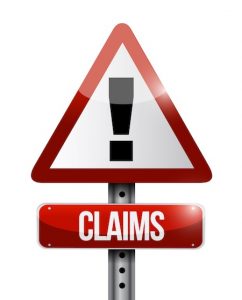“It is always useful to be able to show, by example, that other ways of achieving the desired result exist which are not covered by the recited claim limitations.”
 The USPTO’s 2019 Revised Patent Subject Matter Eligibility Guidance provides that if an abstract idea represented in one or more claim elements is integrated into a practical application by other limitations in the claim, then the claim as a whole would not be directed to a judicial exception and, as such, would be considered patentable under section 101.
The USPTO’s 2019 Revised Patent Subject Matter Eligibility Guidance provides that if an abstract idea represented in one or more claim elements is integrated into a practical application by other limitations in the claim, then the claim as a whole would not be directed to a judicial exception and, as such, would be considered patentable under section 101.
The revised guidance states that “a claim that integrates a judicial exception into a practical application will apply, rely on or use the judicial exception in a manner that imposes a meaningful limit on the judicial exception, such that the claim is more than a drafting effort designed to monopolize the judicial exception.” This would seem to be in line with the public policy underlying the judicial exception of not allowing a claim to preempt all means of achieving a desired result. Often, patent claims are drafted such as to contain claim elements directed to desired outcomes as opposed to specific ways of achieving the desired outcomes. Claim elements directed only to desired outcomes have the effect of preempting all ways of achieving the desired outcome, and, as such, are considered to “monopolize the judicial exception”. The public policy behind the judicial exception seeks to prevent the monopolization of the judicial exception by a claim reciting only the desired outcome.
Meaningful Advice from McRo
The question, however, remains as to how to show that a “meaningful limit” has been placed on the judicial exception. The patent office has suggested using considerations provided by Supreme Court and Federal Circuit decisions. The case of McRo v. Bandai (Fed. Cir. 2016) has been particularly useful in overcoming rejections under section 101, even prior to the issuance of the revised guidance. The so-called “McRo Test” states that claims are not directed to an abstract idea if the claim uses limited rules in a process specifically designed to achieve an improved technological result in conventional industry practice. In other words, if the improved technological result was achieved in a specific way, this would render the claim non-abstract. As such, claiming a specific way of achieving the desired result may be one way to show that “meaningful limitations” have been placed on the abstract idea. The “practical application” analysis of the revised guidance appears to be an attempt by the patent office to formalize this concept.
As an example, consider a claim limitation directed to selecting promotional materials for presentation to a user. Such a claim limitation is directed to all methods of selecting the promotional materials and may therefore be considered abstract. However, adding specific limitations as to how the promotional materials are selected places a “meaningful limit” on the abstract idea. For example, if the promotional materials are selected based upon the user’s affinity for a particular subject as expressed in a social graph, then other methods of selecting the promotional materials are not covered by the claim limitation. As such, the claim limitation does not preempt all methods of selecting the promotional materials, and the goal of the public policy underlying the judicial exceptions is satisfied.
More Help From Vanda
Additional assistance may be found in the recent case of Vanda Pharma. Inc. v. West-Ward Pharma. (Fed. Cir. 2018), in which the patent at issue was directed to a method to treat schizophrenia involving a combination of various compounds. The court found the method of treatment to be directed to patentable subject matter because the claims applied natural relationships between the various compounds instead of being directed to the combination of compounds. In other words, the claims at issue practically applied a natural relationship of the compounds. The case also cited the importance of evaluating the claims as a whole in a step 2A Alice analysis.
How meaningful do the limitations need to be to transform the abstract idea into a practical application of the abstract idea? No guidance is given on the issue; however, it is always useful to be able to show, by example, that other ways of achieving the desired result exist which are not covered by the recited claim limitations. That is, a convincing argument that the claim limitation is non-abstract because it has “meaningful limits” on its scope may be demonstrated by showing that other methods achieving the same desired result exist. When this is the case, the goal of the public policy of not allowing preemption of all methods of achieving the desired result is met.
The 2019 Revised Guidance represent a first step toward a long-awaited formalization of the Alice/Mayo test that will hopefully provide consistent application of the abstract idea judicial exception from examiner to examiner.
Image Source: Deposit Photos
Copyright: alexmillos
Vector ID: 53536737

![[IPWatchdog Logo]](https://ipwatchdog.com/wp-content/themes/IPWatchdog%20-%202023/assets/images/temp/logo-small@2x.png)

![[Advertisement]](https://ipwatchdog.com/wp-content/uploads/2024/04/UnitedLex-May-2-2024-sidebar-700x500-1.jpg)
![[Advertisement]](https://ipwatchdog.com/wp-content/uploads/2024/04/Artificial-Intelligence-2024-REPLAY-sidebar-700x500-corrected.jpg)
![[Advertisement]](https://ipwatchdog.com/wp-content/uploads/2024/04/Patent-Litigation-Masters-2024-sidebar-700x500-1.jpg)

![[Advertisement]](https://ipwatchdog.com/wp-content/uploads/2021/12/WEBINAR-336-x-280-px.png)
![[Advertisement]](https://ipwatchdog.com/wp-content/uploads/2021/12/2021-Patent-Practice-on-Demand-recorded-Feb-2021-336-x-280.jpg)
![[Advertisement]](https://ipwatchdog.com/wp-content/uploads/2021/12/Ad-4-The-Invent-Patent-System™.png)






Join the Discussion
4 comments so far.
Pro Say
March 19, 2019 02:13 pmAn excellent way to actually prove no preemption concern is to perform a “post art” search. Unlike a prior art search, a post art search is conducted of art which is dated after the filing / priority date of the subject patent application / disclosure.
Including taking both the alleged abstract concept and key terms from the spec and claims and running them through the PTO databases of both issued and pending patents.
You’ll likely find at least a handful — and sometimes numerous — examples of other ways of doing what’s been invented / claimed (if even in a general sense, e.g. advertising, escrow / intermediated settlement, etc); which you can include both in aggregate numbers (e.g., stating “Indeed. Over 100 patents and patent applications …” and specific cases (e.g., stating “For example, note patents …. and applications …” argument for no undue preemption.
Such examples — especially the PTO’s own records — is not just suggestion or evidence of; but unarguable, dispositive proof of no preemption concern.
Just be absolutely certain that such post art is truly post (and not prior) art.
concerned
March 19, 2019 12:39 pmThis article assumes the patent examiner will actually listen. My examiner has rejected 112 patent applications out of 114 in a 12 month period.
We argued McRO. We showed the other (inefficient) current art now used to achieve the desired result by providing 2 university studies. And that the current art is littered with oversights and mistakes,hence, the scope of my process to eliminate those mistakes and oversights by working professionals and experts.
My process was new and useful, never done on Earth, that has a concrete “step by step” process to show how to get the actual desired result, not some concept of what the desired result may look like with undefined steps.
The author of an upcoming book (The Plight of the Patentee) that includes my story has the right view. The patent examiner sees the word computer and immediately stamps “rejected” as it must be routine, well understood and conventional. Not because the examiner can prove it, because the examiner says it must be so.
I do like the Director’s new guidance of practical application of a new and useful process.
Curious
March 19, 2019 12:24 pm“meaningful limits” … yet another undefined term in the pantheon of undefined terms that litter Section 101 jurisprudence.
This is getting old ….
Appearance of …
March 19, 2019 09:24 amI like this approach. Since apparently patent law is now Federal common law anyway (snark intended), it seems to me that an adequate rebuttal to a finding that a claim is “abstract” should be a showing of alternative, non-infringing ways to produce the same results.
An additional advantage: this would also force judges and patent examiners to actually read more of the claim limitations. Not all claim limitations perhaps (more snark intended), but at least more.